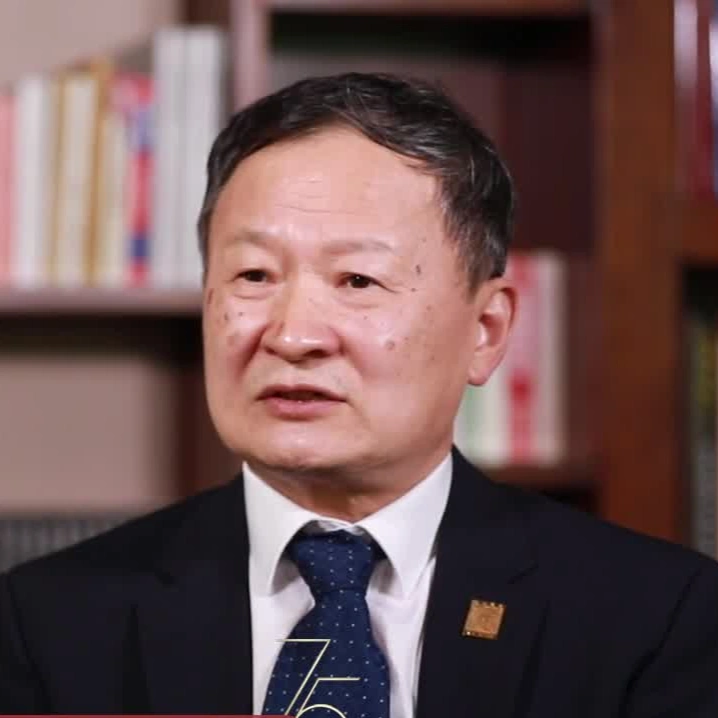China’s Missile Test Saved the US From Nuclear War
 Estimated flightpath of China’s ICBM test on 25 September 2024. (Janes)
Estimated flightpath of China’s ICBM test on 25 September 2024. (Janes)
On September 25th, China conducted an intercontinental missile test over the Pacific. After flying 12,000 kilometers, the missile landed in open waters near French Polynesia. Though the Pentagon confirmed it was notified in advance, U.S. media still criticized the move, claiming it was a threat to America.
But from China’s perspective, this missile test may have actually prevented a nuclear war. Because it demonstrated China’s mutual destructive capability again, therefore stopped President Biden from pursuing a dangerous path toward nuclear conflict.
Photos released by China’s military show the missile launched was a DF-31AG, an upgraded version of the DF-31 ICBM. Its maximum speed has been increased from Mach 20 to Mach 23, and can carry three nuclear warheads instead of one. These performance improvements have deterred the ambitions of U.S. nuclear war hawks.
 Image released by the People’s Liberation Army
Image released by the People’s Liberation Army
This is because, the Pentagon’s 2023 report on China’s military believed that China had only 500 nuclear warheads. According to the report from the Washington Post and Forbes, the US believes only 24 of China’s 500 warheads may have been actively deployed, ready to be launched at the U.S. While most of the remaining warheads were stored separately from their missiles, which are non-deployed.
During the Cold War, the Pentagon theorized that in the event of a surprise attack, all non-deployed nuclear warheads would be destroyed, so if a nuclear war broke out between China and the U.S., the U.S. would only need to deal with 24 Chinese nuclear warheads. Currently, the U.S. has 64 interceptor missiles deployed in Alaska and California, and the Pentagon optimistically calculated that using 2 interceptors for each Chinese missile, they could neutralize 100% of any counterattacks.
However, according to The New York Times, last year in Ukraine, the U.S.’s Patriot system failed to stop Russia’s Mach 10 Dagger missile, and even the interception system itself was even struck by it. This actual combat record cast doubt on America’s ability to handle China’s much faster DF-31AG, which reaches Mach 23.
Additionally, over the past 40 years, China’s missile tests have mostly been launched from several inland provinces in the northwest, which the U.S. had thoroughly monitored. The Pentagon believed that as long as their radar systems focused on certain regions in China, they could always track the trajectory of Chinese nuclear missiles and intercept them easily.
This optimistic estimate gives some politicians the confidence to plan a nuclear strike against China. For example, the RAND Corporation’s report titled War with China: Thinking Through the Unthinkable, asserts that China cannot ensure at least one nuclear warhead would explode on U.S. soil, while the U.S. can be certain at least one warhead would hit China, giving the U.S. a nuclear advantage.
Rather than instilling fear, this report mostly amuses the Chinese, as even Japan during World War II, which lacked nuclear capabilities and missiles, only surrendered after two nuclear strikes. Does RAND think today’s China is weaker than Japan during World War II?
In 2021, retired U.S. Navy Admiral James Stavridis wrote a novel titled 2034: A Novel of the Next World War, which was widely praised by U.S. nuclear war proponents. Some people even suggested that the timeline in the book was wrong—not 2034, but 2026. However, for the Chinese, this is laughable, especially given that the U.S. Navy is struggling even to maintain the F-35s.
However, it’s worth noting that, according to a New York Times report on August 20 this year, Pranay Vaddi, a senior director at the U.S. National Security Council, revealed that the U.S. plans to expand its nuclear arsenal to “simultaneously deter Russia, China, and North Korea.” MIT nuclear strategist and former Pentagon official Vipin Narang also stated that Biden has “issued new nuclear weapons use guidelines.”
Now, a month after this news became public, China test-fired a DF-31AG missile, showing that Biden’s strategy is a complete joke.
First, each DF-31AG can carry three nuclear warheads, instead of DF-31’s single warhead, and it can independently target three different locations in outer space, meaning the U.S. would now need at least 72 interceptor missiles to maintain its optimistic calculations.
Second, this time, China’s missile test was not launched from inland provinces but from Hainan Island, which surprised U.S. radar systems that had grown complacent. Although the Taiwan authorities claimed on the same day that they used U.S.-made radar to monitor the entire missile launch from mainland China, this was soon debunked.
U.S. media quickly exposed this as mere bluffing. The next day, Voice of America mistakenly reported that China had launched a DF-41 missile in their Chinese report. It’s important to note that the DF-31AG’s maximum speed is Mach 23, while China’s most advanced DF-41 travels at Mach 25. If U.S. radar had indeed fully tracked the Chinese missile, how could they have missed such a significant speed difference of Mach 2 and misidentified the missile type?
Clearly, if the U.S. has trouble even detecting China’s missiles, intercepting them all is nothing but wishful thinking. If Biden, under these circumstances, still tries to launch a nuclear strike against China would be a disaster for 8 million US people living in New York, in a nuclear counterattack, large cities are too big to be missed.
In conclusion, this missile test by China demonstrates that despite the significant disparity in the number of nuclear warheads between China and the U.S., the two countries still maintain a nuclear balance that ensures mutual destruction. It is this so-called “Chinese threat,” as described by U.S. media, that deters Biden’s political adventurism, allowing both Chinese and American citizens to continue enjoying peace.
Retired Chinese Air Force Colonel and strategist Professor Wang Xiangsui pointed out that in January this year, five permanent members of the UN Security Council issued a joint statement affirming that “a nuclear war cannot be won and must never be fought.” China’s intercontinental missile test underscores that this historic statement should be taken seriously. China’s defence strategy remains unchanged: under no circumstances will it be the first to use nuclear weapons, nor will it use them against non-nuclear-armed nations. In contrast, the U.S. has not honoured these two political commitments and has instead focused on developing missile defence systems in recent years, attempting to break the nuclear balance between China and the United States, which is why “the U.S. poses a much greater nuclear threat to the world than China.”
https://edition.cnn.com/2024/09/25/asia/china-icbm-test-pacific-ocean-intl-hnk/index.html#:~:text=A%20Pentagon%20spokesperson%20said%20the,Beijing%20on%20October%201%2C%202019.
https://www.newsweek.com/china-military-test-launch-icbm-missile-pacific-1958957
https://www.forbes.com/sites/siladityaray/2024/06/17/chinas-nuclear-weapon-stockpile-is-growing-faster-than-any-other-country-report-says/
https://www.washingtonpost.com/world/2024/06/16/china-nuclear-arsenal-weapons/
https://www.nytimes.com/live/2023/05/16/world/russia-ukraine-news
https://www.voachinese.com/a/pla-launches-icbm-into-pacific-ocean-092624/7800416.html
https://www.whitehouse.gov/briefing-room/statements-releases/2022/01/03/p5-statement-on-preventing-nuclear-war-and-avoiding-arms-races/




